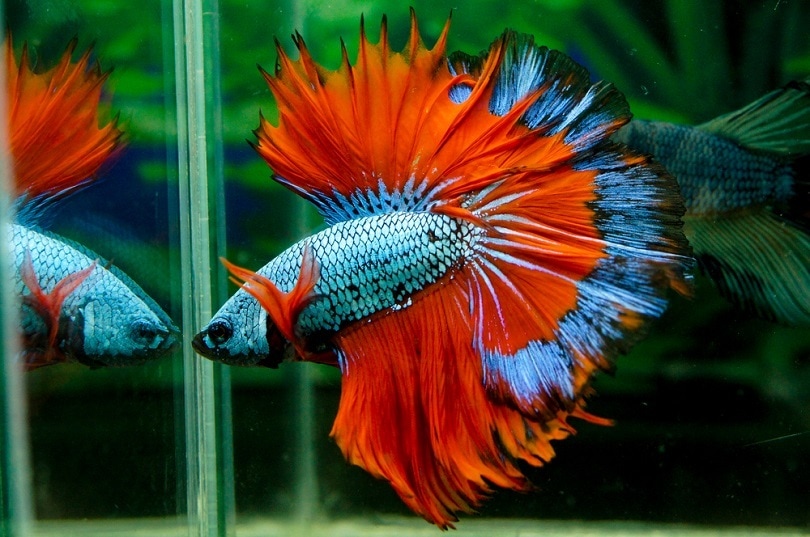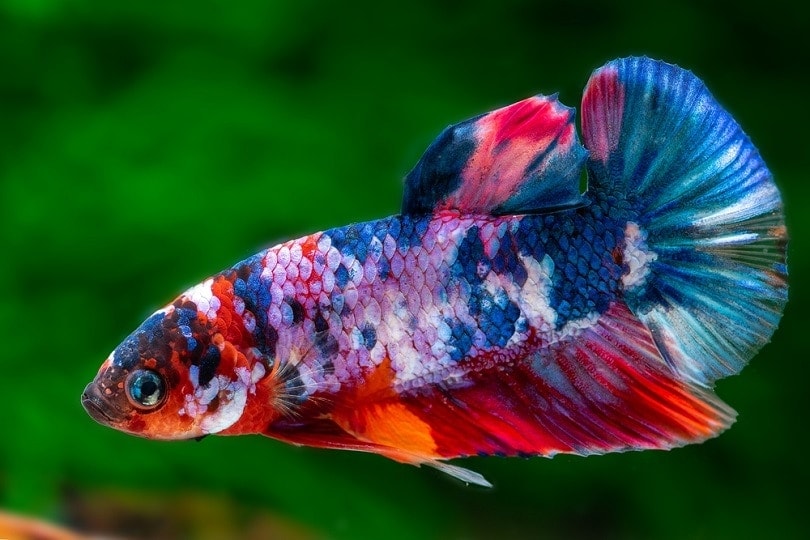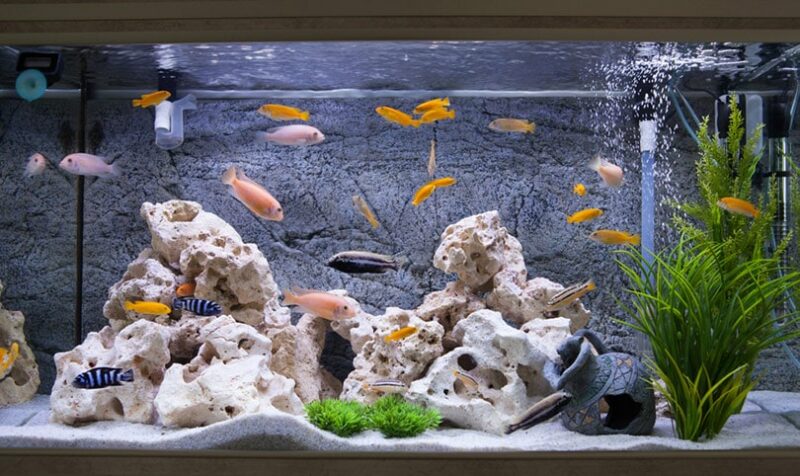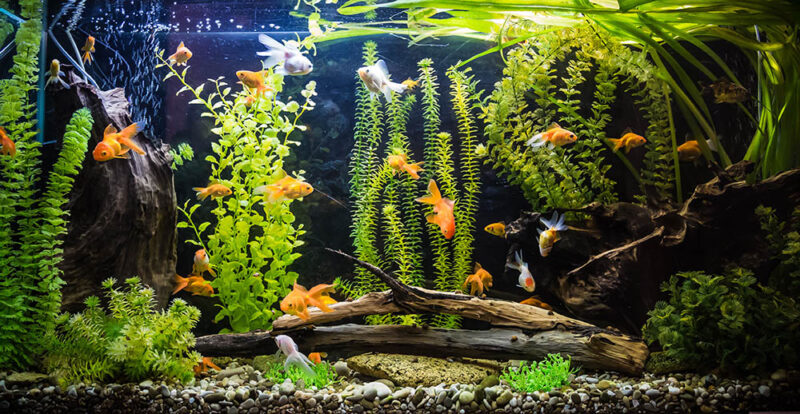
A fascinating and popular freshwater fish in the aquarium hobby is the Betta or “Siamese fighter” fish. These small fish rarely get larger than a couple of inches in size, and the males’ magnificent fins and colors are admirable in the species. When keeping these fish as pets, not much thought is usually given as to where they might have come from. Nearly all Betta fish will have been bred from wild specimens to create the Betta fish you can find in a pet store today and all domesticated Betta fish originate from Southeast Asia.
Finding out how these vibrantly colored fish made their way into the aquarium and pet trade industry is not only fascinating but gives us insight into how Betta fish have changed over the years.
Betta Fish and Their Natural Habitat
Betta fish (B. splendens) are classified as over 70 different species, with the most colorful species and varieties being popular pets. All domesticated Betta fish originate from Southeast Asia where they inhabit rice paddies, ponds, marshes, and streams in countries such as Thailand, Laos, Vietnam, and Indonesia. You can also find Betta fish in the Mekong and Chao Phraya river basins in Cambodia.

Natural Habitat
Bettas are tropical and freshwater fish, since these are the water conditions they will experience in the wild. The waterways in a Betta’s natural habitat are shallow and slow-moving and can dry up during certain times of the year, which led to the Betta fish developing a labyrinth organ.
This organ allows the Betta fish to survive in environments with low oxygen such as polluted waterways and stagnant ponds, and it is part of the reason Bettas are such hardy and adaptable fish. Even though the Betta fish’s natural habitat consists of small bodies of water, the size is still quite large in comparison to the size of the average Betta fish tank.
Most Betta fish would have a territory of 2 to 3 square feet when the waterways were filled after the rainy seasons. In comparison to the small aquariums that Betta fish are kept in nowadays, their wild habitat is noticeably larger. The wild Betta fish would spend most of their time hiding amongst the overgrowth of vegetation or hunting for insects and other live foods since they are carnivores.
Wild vs Domesticated Betta Fish
The striking difference between wild and domestic Betta makes it difficult for us to see how they could be the same fish. Even though domesticated Bettas originate from wild Betta fish, the wild Bettas look very different from domesticated Bettas, with noticeable differences in behaviors too.
Bettas are one of the longest domesticated fish and are estimated to have been part of human history for nearly 1,000 years. The domesticated Betta is much more colorful than the wild-type Bettas, and there is a significant difference in their size and fin types.
Appearance
Since the domestication of Betta fish, breeders have completely changed the Betta’s appearance. The domesticated Betta fish has been bred to look more appealing as a pet. The males have longer fins in a variety of different lengths and styles, and they are found in more colors and patterns than wild specimens. The wild Betta fish is a duller color with limited patterns and shorter tails.
Domesticated Bettas have over 20 different types of fins, from the veil tail, crown tail, or half-moon varieties. However, wild Betta fish have short tails in the plakat fin style. The longer fins of domestic Bettas look attractive in aquariums where they are kept as pets, but it will only slow a wild Betta fish down and make it difficult for them to function in their natural habitat.
The reason the domesticated Betta fish we keep as pets have such a different appearance is due to selective breeding for hundreds of years. The domesticated Betta was bred to have more colors, different fins, and a more aggressive temperament.

Behaviors
In comparison to wild Bettas, the domesticated Betta fish is more aggressive. This is likely due to their origins as fighting fish for entertainment and monetary gain back in the 1800s. During this time, Betta fish were used for fighting and they didn’t have many colors or unique fins like the pet Betta fish we see today. It wasn’t until the 19th century that Betta fish started to be kept as pets and weren’t bred much further for their aggressive trait.
An aggressive male Betta fish was seen as skilled and more likely to win in a fight and it is the main reason why you can’t keep Betta fish together in the same aquarium. This led the Bettas to be bred specifically for fighting other Betta fish. Now that they are kept as ornamental pets in aquariums, improving their colors, fins, and overall appearance is the main goal of Betta fish breeders.
Where Do Pet Store Betta Fish Come From?
Pet stores stock a variety of different Betta fish, however, the small aquariums and containers they are kept in until they are bought have sparked a lot of controversy amongst Betta owners. Most pet store Betta fish aren’t going to have been taken from their wild habitat, which means you will be sold a fully domesticated Betta fish that has been in captivity its whole life. Instead of being captured from the wild, the colorful pet Betta fish is going to have been mass bred on fish farms. However, there are some cases of Bettas being taken from the wild to be bred in captivity.
This is because Betta fish belong to the global pet trade industry, and they are mass-produced to be sold as pets. Big chain pet stores and some local pet stores will likely import a large quantity of Betta fish that come from fish farms, usually from Thailand and other Southeast Asian countries. These fish farms produce thousands of Betta fish at a time to keep up with the high demand for these fish as pets. Bettas from fish farms are usually mass-produced for retail, so little thought is given to their health, characteristics, and longevity.

Getting Betta Fish from Breeders
Although most pet Betta fish are bred on fish farms, a small portion of Betta fish come from ethical Betta fish breeders. These Bettas won’t be mass bred or produced in large numbers, and more thought is usually given to their health and well-being. These Bettas are usually bred by individuals or small groups of breeders.
Many Betta fish breeders breed healthy Bettas to improve the species and create new colors, patterns, and fin types. Some smaller pet stores may sell Betta fish that are part of ethical breeders’ stock, and you might find that these Bettas are generally healthier. This can cause these Bettas to be priced higher than Bettas that have been mass-produced on fish farms.
In Conclusion
Bettas have been domesticated for nearly 1,000 years, with the majority of domesticated Betta fish coming from wild specimens. Pet store Betta fish have likely been mass-produced on fish farms in their native Southeast Asian countries since they are part of the global pet trade industry. These Bettas are imported in large quantities to pet stores and other retailers where Bettas are sold as pets.
As a result, the domesticated Betta fish looks very different than the wild types. This shows that pet Bettas are not usually captured from the wild but instead bred from generations of Betta fish that spend their lives in captivity.
Featured Image Credit: Sirinutbettafarm, Shutterstock









